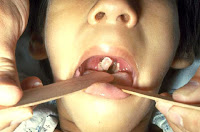Lime water FEEDING children
- Benson.A.R, Lime water In the formulas herein given lime water is not included. If fresh, pure milk is used, and care in preparation, lime water is almost never required. When it is needed, it should be given under a physician's direction and not indiscriminately. Its use was originally based upon the supposition that cow's milk was acid, and this we now know is not so. In the large quantities which were formerly given, lime water caused over-secretion of the acid of the stomach and is no doubt responsible for many cases of indigestion in older children and adults. Mothers are too apt to resort to lime water in the the food when there is slight sourness or regurgitation, forgetting that the normal reaction of the stomach contents is acid, and that the true remedy lies in a change of food to one which is more easily digested. If babies are started on formulas without lime water, it is very rarely necessary to use it, but if they once become accustomed to it, it is di...
